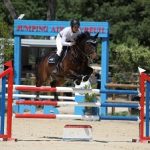In Aviamasters, every flight decision—from speed mode selection to rocket deployment—embodies a sophisticated interplay of physics, probability, and strategic timing. This game transforms abstract aerodynamic principles into tangible mechanics, offering players a dynamic laboratory for understanding flight dynamics. At its core, each speed mode—Tortoise, Man, Hare, and Lightning—represents a distinct regime defined by kinetic energy, risk tolerance, and control precision.
The Four Speed Modes: A Spectrum of Flight Regimes
Each mode shapes trajectory and fuel efficiency in measurable ways. The Tortoise mode emphasizes cautious navigation, minimizing drag and conserving energy—ideal for endurance and precision. The Man mode balances control and performance, optimizing lift and reaction time through moderate thrust. The Hare mode accelerates speed aggressively, increasing velocity but also drag, demanding sharper handling under higher dynamic loads. Finally, Lightning mode unleashes high-speed bursts, maximizing forward progress at the cost of rapid fuel depletion and heightened risk.
This layered control mirrors real-world aerodynamics: lower speeds reduce kinetic energy expenditure but slow progress, while higher speeds increase drag and thrust demands, demanding precise thrust management. Mode selection is not arbitrary—it’s a strategic calibration of thrust efficiency and inertia.
Collectibles as Feedback: ÷2, Numbers, and Multipliers in Flight Outcomes
Rocket collection introduces pivotal feedback loops, acting as instant decelerators that reduce speed and energy consumption. This teaches players to manage momentum proactively—a core principle in flight control. Numbers (+) dynamically boost multipliers, demonstrating compounding gains through spatial awareness and precise timing. Multipliers (×) amplify outcomes nonlinearly, illustrating exponential growth and the narrow window of optimal decision-making—where a single rocket can trigger cascading changes in flight mode transitions and residual energy.
The physics here aligns with real-world energy conservation: energy stored in multipliers acts like residual kinetic energy, enabling chain reactions when deployed at peak efficiency.
Luck, Strategy, and Adaptive Decision-Making
While rockets add an element of chance, success hinges on anticipating cascading effects. A rocket dropped mid-flight alters future speed mode transitions and decays multiplier values unpredictably. This fusion of randomness and strategy reflects actual flight uncertainty, where skilled players mitigate luck through pattern recognition and adaptive planning—often adjusting mode selection mid-game to recover from unexpected momentum shifts.
Such interplay reveals how probabilistic feedback shapes long-term outcomes, making each decision a test of both intuition and analytical foresight.
The Physics Behind Flight in Aviamasters
Each speed mode corresponds directly to kinetic energy management. Lower speeds conserve fuel but slow navigation; higher speeds increase thrust demands and drag, accelerating energy loss unless countered with thrust adjustments. Multipliers function as kinetic energy reservoirs, storing residual momentum to enable chain reactions under precise control—akin to regenerative braking in electric aircraft but applied dynamically in real time.
Players internalize core principles like inertia, thrust efficiency, and energy conservation through repeated simulation, turning abstract physics into intuitive understanding.
From Game Mechanics to Real-World Flight Science
Aviamasters distills complex aerodynamic decision-making into accessible gameplay. Mode selection, rocket timing, and multiplier use parallel real pilot choices under variable conditions—balancing speed, fuel, risk, and environmental feedback. The game’s structure embeds STEM concepts—probability in rocket placement, systems thinking in energy transfer, and adaptive control in dynamic response—making physics tangible and measurable.
As players navigate these layered systems, they engage with a microcosm of flight science: uncertainty met with precision, randomness tempered by strategy, and energy managed with foresight.
Structured Insights: Aviamasters as a Flight Decision Laboratory
- Speed Mode Selection: Choose Tortoise for endurance, Man for balance, Hare for speed, Lightning for risk-laden urgency. Each mode alters kinetic energy flow and flight dynamics.
- Collectibles and Feedback: Rocket collection (÷2) decelerates momentum, teaching energy conservation. Numbers (+) boost multipliers, illustrating compound gains through spatial and temporal precision.
- Luck and Strategy: Random rocket placement introduces uncertainty, requiring players to anticipate cascading effects on mode shifts and multiplier decay—mirroring real flight unpredictability.
- Energy and Momentum: Multipliers store kinetic energy, enabling chain reactions when deployed optimally—echoing real-world regenerative systems in aviation.
Lightning mode late game… savage offers a vivid illustration of high-risk, high-reward decision-making under pressure—mirroring real pilot tactics in dynamic environments.
By blending precision, chance, and adaptive control, Aviamasters not only delivers thrilling gameplay but also deepens understanding of flight science—where every decision echoes physics in motion.
| Key Flight Decision Factors | Speed Mode | Tortoise | Caution, fuel efficiency | Low speed, slow acceleration |
|---|---|---|---|---|
| Dynamic Feedback | ÷2 Rockets | Instant deceleration, energy reduction | Reduces momentum, slows progress | |
| Compound Gains | Numbers (+) | Dynamic multipliers | Exponential boosts, compounding gains | |
| Cascading Effects | Rocket placement | Timing impacts mode transitions | Decay from premature use |
« Aviamasters transforms flight physics from abstract theory into interactive experience—where every rocket launch is a lesson in energy, momentum, and strategic timing. »















